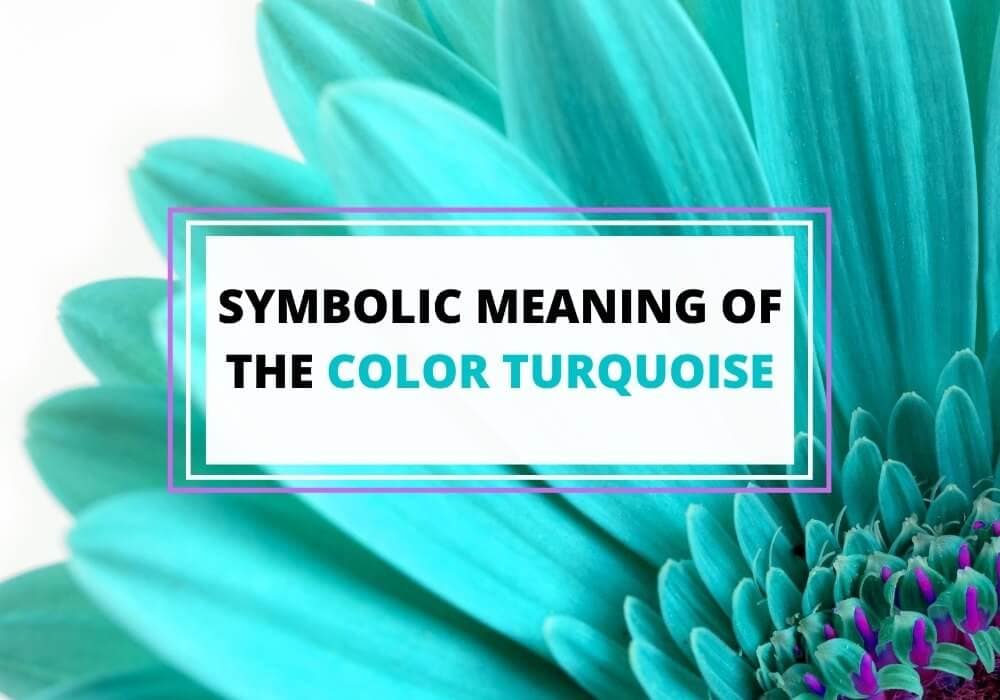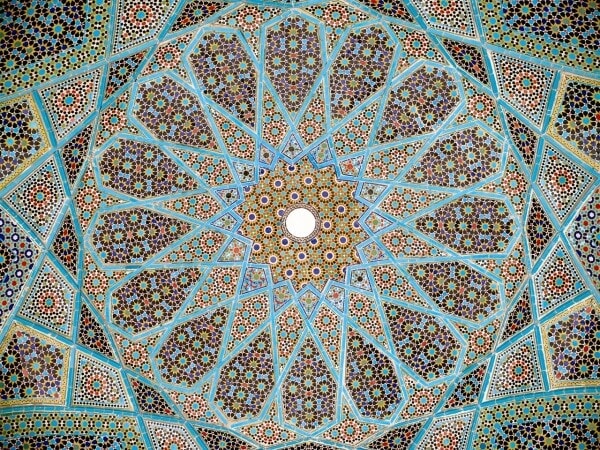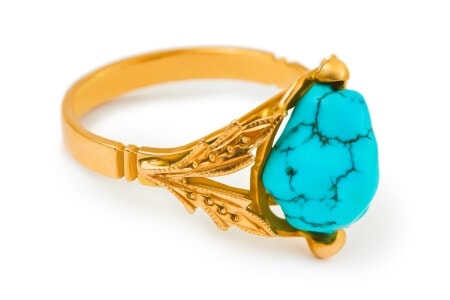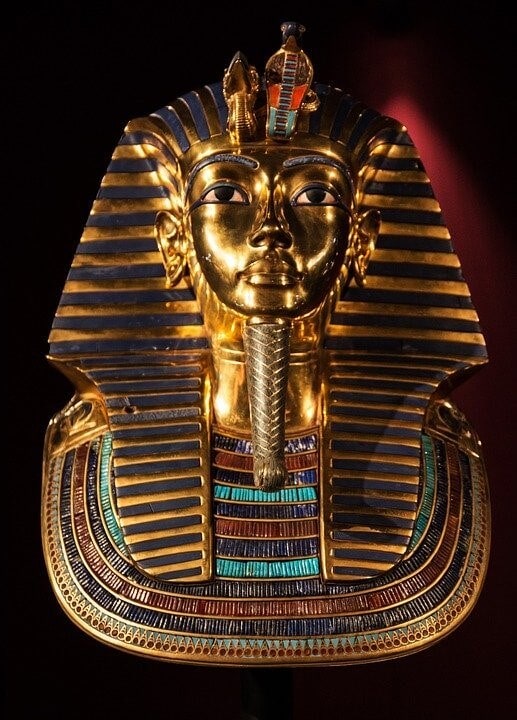
Table of Contents
Turquoise is a unique and attractive color that brings images of exotic beaches and unique gemstone jewelry to the mind. The unique combination of blue and green makes turquoise a color that stands out and catches the eye.
Apart from the semi-precious turquoise stone, this is a color that doesn’t occur often in nature but when it does, its beauty is breathtaking.
In this article, we’re going to take a quick look at its symbolism, history, and what it’s commonly used for today.
What Does Turquoise Symbolize?
Turquoise is a blue/green color, named after the gemstone. The word ‘turquoise’ was derived from the French word for ‘Turkish’ since the stone was originally brought to Europe from Turkey. It was first used in English as the name of a color in the year 1573.
Turquoise is a calming and cooling color that’s associated with sophistication, energy, wisdom, serenity, friendship, love and joy. Its various tints have a soft and feminine feel to them which is why it’s often considered a ‘girls’ color’. Certain variations of the color are used to represent water and are referred to as aquamarine and aqua.
- Turquoise is a symbol of good luck. Both the color and the stone turquoise are symbolic of friendship and are believed to bring peace to one’s home and everyone in it. This is why the stone is often used for good luck charms.
- Turquoise symbolizes protection. The color turquoise symbolizes protection from negative energy and harm. The stone has been used for decades as protection amulets. It’s also believed to protect you along with your possessions from loss, attack, theft or accident. Therefore, many people tend to carry it with them when they travel.
- Turquoise has healing properties. It’s said that the color turquoise has healing properties that affect the body and mind. Many believe that it helps neutralize acidity, alleviates stomach problems, rheumatism and viral infections while also acting as an anti-inflammatory which helps to enhance communication skills and calm the mind.
- Turquoise represents water. Because of its calm energy, the color turquoise is said to have a clear and strong connection to the purity of natural elements like water or air.
Symbolism of the Color Turquoise in Different Cultures

The turquoise color has a lot of symbolism in various cultures, but one thing commonly found in all cultures is the belief that it has powers of protection.
- In Egypt the color turquoise, just like the stone, was sacred and revered. It was believed to provide powerful protection and was associated with Hathor, known as the goddess of dance, music and motherhood. Turquoise was commonly found in burial objects and tombs, said to protect the deceased on their journey to the afterlife.
- The Ancient Persians wore turquoise stones around the neck or wrist to protect themselves from unnatural deaths. If the stones changed color, it was believed that doom was approaching. However, the color changed only because of dust, skin acidity or certain chemical reactions but this wasn’t understood at the time. Even today, to the Persians, the color turquoise represents protection from death. It’s also associated with Iranian architecture.
- In Russia and Central Asia turquoise are both strongly associated with the interiors of the large mosques and domes, similar to Iran.
- Turquoise is an extremely significant color in Native American culture, representing life and the hues of the Earth. The stone is highly revered because of its unique color-changing properties.
- In Indian culture, turquoise represents protection and strength, while also believed to give the wearer psychic sensitivity. It’s also symbolic of hope, wealth and courage. Indians consider this color to be auspicious, signifying happiness, prosperity and calmness.
Personality Color Turquoise – What It Means

If your favorite color is turquoise, you may have a ‘turquoise personality’, which means there are some character traits which are specific to those who love the color. Here’s a list of the most common personality traits found in people who love turquoise, and while it’s not likely that you’d exhibit all of the traits listed below, you’re sure to find some that are totally you.
- People who love turquoise are approachable and very friendly. They’re also extremely easy to communicate with.
- Turquoise personalities are self-sufficient, with very good self-esteem.
- They’re great decision makers and clear thinkers.
- They make great leaders and tend to influence others.
- For turquoise personalities, public speaking and the ability to focus and concentrate are generally easy.
- They have very strong powers of perception and they’re great and coming up with solutions to problems.
- On the negative side, they can be a bit self-centered and tune in to their own needs, excluding the needs of others.
- Their deepest need is to have emotional balance in life and the ability to express all hopes and dreams. They are people who like to make their own way in the world and live by their own terms.
Positive and Negative Aspects of the Color Turquoise
Turquoise is a color that can greatly influence the human mind in both a positive and negative way. In psychology, it’s said to control and heal the emotions, creating stability and an emotional balance. It also has the ability to calm down and invigorate people, giving them positive energy. For public speakers, printing a speech on turquoise colored paper is said to give control over expression and speech while also helping to build confidence.
As we mentioned earlier, turquoise also has a great many health benefits. It’s believed to increase muscular strength and even alleviate gout.
Too much of turquoise in your life however, can make your mind overactive, creating emotional imbalance. It can make you feel either over-emotional or not emotional at all. Being surrounded by turquoise can make you become over-analytical, egocentric and extremely fussy.
Too little of the color can also cause negative effects like influencing you to withhold your feelings, resulting in confusion and secrecy about the direction your life is going in. It can also cause you to become cold, indifferent and even a little paranoid at times.
Turquoise in Jewelry and Fashion

The color turquoise has taken the fashion world by storm and has become one of the most popular colors for both fashion and jewelry. The color looks great on any type of attire, from evening gowns to party dresses with all kinds of embellishments and fabrics.

Turquoise is also quite easy to pair with other colors. It’s especially pairs well with earthy, warm colors like brown, orange and yellow, but also tends to look stunning with cool colors like purple, pink, green and blue.
Turquoise accessories can make even the simplest of outfits look colorful and attractive. Nowadays, many designers combine turquoise with diamonds, pearls and even gold.
The turquoise gemstone with matrix is a popular option for bohemian and rustic jewelry, although the blue versions of turquoise are often used to make high-quality fine jewelry.
History of the Color Turquoise

- Turkey
The turquoise stone has been recognized as a talisman of protection and good luck for centuries and was first used as said talisman by the Turkish soldiers, centuries ago.
- Egypt
The color turquoise became popular in Egypt when the Egyptians first discovered the turquoise gemstone over 7,500 years ago. They coveted the gemstone, considering it sacred and believing it to contain metaphysical powers. The color turquoise was used used for jewelry and also in the inner coffin of King Tutankhamen.
The Egyptians made turquoise pigments by heating together sand, limestone and copper which resulted in a rich, saturated royal-turquoise pigment, called ‘Egyptian Blue’. The pigment was highly popular and was soon taken up by the Persians, Greeks and Romans who even built large factories for the production of the pigment.
- Ancient China
The Ancient Chinese made their own turquoise pigments by blending heavy elements such as lead, mercury and barium with copper. However, the same heavy elements were usually brewed into elixirs which turned out to be toxic and it was reported that about 40% of Chinese emperors were poisoned by heavy-elements. After that, the production of the pigment was discontinued.
- Mesoamerica
Another turquoise pigment was invented by the Mesoamericans who mixed indigo plant extract, resin from sacred Mayan incense and clay minerals. Different shades of the color were made, ranging from turquoise to dark blues but it’s not exactly clear how the Mesoamericans made various shades of it. The pigments were perfect and unlike the Egyptian pigments, did not cause any harmful effects.
- Turquoise Today
Today, both the turquoise color and stone are widely used around the globe for numerous purposes, the most common being for garments and amulets of protection. There are many synthetic turquoise pigments out on the market used for fabrics, art and decoration. In some parts of the world, turquoise is still highly revered and valued and it’s still popular just like it has been for centuries.
In Brief
Turquoise is a stylish and elegant color, commonly used in fashion, decorative items and in interior design. The unique combination of blue and green makes turquoise a color that stands out and catches the eye.








